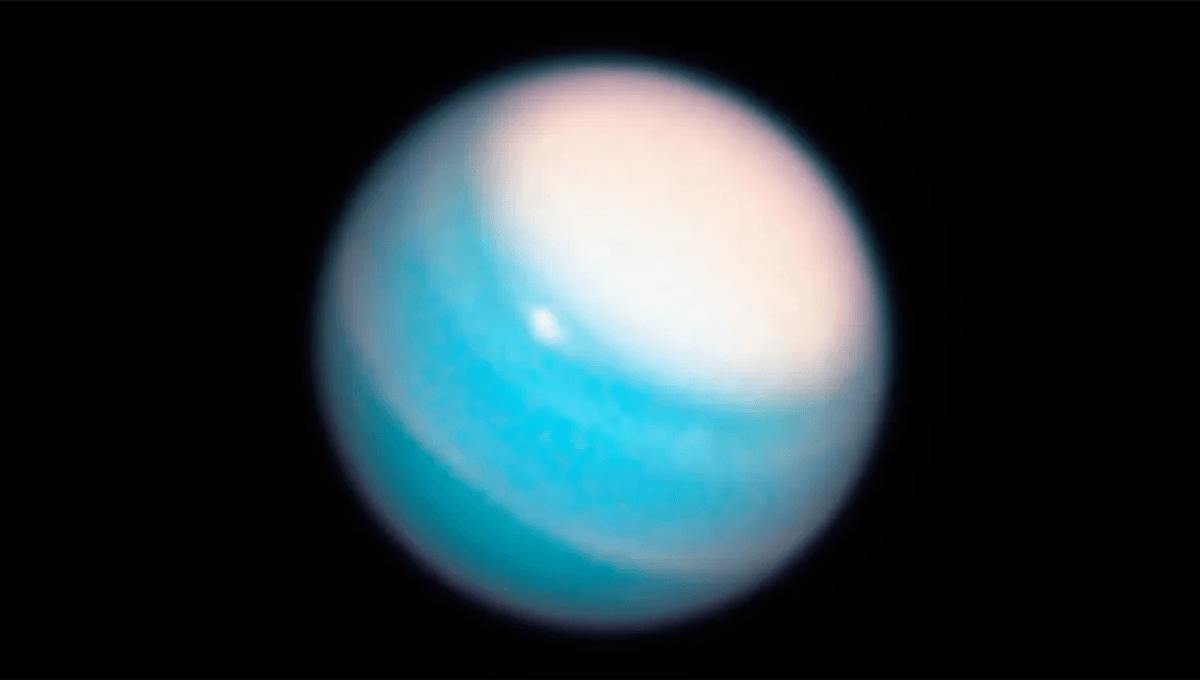
Astronomers taking a closer look at Uranus believe it could be filled with a lot more methane than we previously thought.
Uranus and Neptune are often referred to as ice giants, with scientists believing that they are mostly made up of “icy” materials such as water, methane, and ammonia, surrounding a hot, rocky core. One of the reasons why astrophysicists believe this is the case is because the region they formed in would likely have been abundant in the necessary components, hence the expectation of a lot of water and ice.
“The first models of Uranus and Neptune were constructed based on the premise that they were formed in the outer parts of a primitive proto-planetary nebula, where the elemental abundances were considered solar,” the new paper, which has not yet been peer-reviewed, explains. “Thus, assuming chemical equilibrium, early studies used calculations of the expected relative molecular abundances to gauge the potential composition of the planets that formed in this region.”
Uranus has not had a whole lot of love from NASA and has been visited by a probe, Voyager 2, only once. That same probe then journeyed on to Neptune, providing much better observations of the planets than ground and space telescopes near Earth allow. When the models of Uranus and Neptune were compared to our limited observations of the planets, they were found to be consistent with what we saw close(r) up.
While this might sound like case closed on the composition of the planets, there was still a bit of an astronomical mystery to solve. Objects in the Kuiper belt are rich in organic-rich refractory materials, and are relatively water-poor, suggesting that the planets should contain more refractory materials than ice-forming materials. So why do earlier models fit with what we observe? According to the team, there can only be two options: Ice-poor building blocks can lead through some processes to an ice-rich planet, or a new model is needed, with the planets having a rockier interior than we thought.
The team generated hundreds of thousands of models of the planets, varying the chemical compositions in the initial conditions until planets similar in mass and structure to Uranus and Neptune emerged. They found that the models which fit best had an interior containing at least 10 percent methane, and over 20 percent in models that also have a large water/rock mass fraction. In these models, methane may be more abundant than water in the planets’ interiors.
“This is a difficulty because CH4 is certainly not that prevalent in the contemporary solar system, and is normally a very small fraction compared to water,” the team wrote. “We suggest that organic-rich refractories are sufficiently abundant in outer solar system planetesimals to drive chemical reactions in the atmospheres of Uranus and Neptune, which, during the phase of planet growth, may produce the required methane.”
The thick methane layer likely formed in chemical reactions that took place as carbon-rich planetesimals collided with the growing planet, and the carbon reacted under intense heat and pressure with hydrogen.
The model would go some way to explaining how an ice-rich planet formed in an area of our solar system filled with water-poor objects. While these models may fit, we need more observations of the giants to learn about their composition.
In short, we’re going to need to take a closer look at Uranus.
The paper is posted on arXiv.
Source Link: Uranus May Be Filled With A Lot More Methane Than We Thought